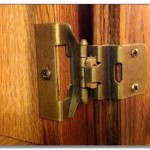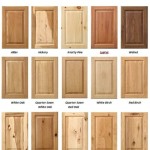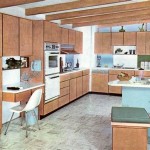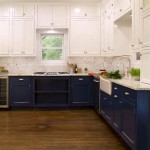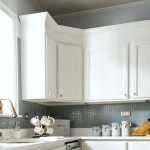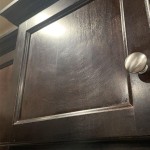Best Kitchen Cabinet Design in Malaysia: A Comprehensive Guide
The kitchen is often considered the heart of the home, a space where culinary creations are brought to life and families gather. In Malaysia, where a rich culinary heritage thrives, the design of the kitchen is paramount. Kitchen cabinets are not merely storage solutions; they are integral to the overall aesthetic and functionality of the space. This article provides a comprehensive overview of the best kitchen cabinet designs in Malaysia, considering factors such as materials, styles, layout options, and emerging trends.
Material Selection: Balancing Durability, Aesthetics, and Budget
The choice of materials for kitchen cabinets significantly impacts their durability, appearance, and cost. Several popular options are available in the Malaysian market, each with distinct advantages and disadvantages.
Solid Wood: Solid wood cabinets are renowned for their timeless appeal and inherent durability. They offer a warm, natural aesthetic and can be easily repaired or refinished. Popular wood choices in Malaysia include rubberwood, which is sustainable and relatively affordable, and more premium options like oak or teak for a more luxurious feel. However, solid wood is susceptible to moisture damage and can warp or crack if not properly sealed and maintained. The higher cost also factors into the decision-making process.
Plywood: Plywood is an engineered wood product constructed from multiple layers of wood veneer glued together. It is a more stable option than solid wood, less prone to warping or cracking from moisture exposure. High-quality plywood, especially marine-grade plywood, is an excellent choice for kitchen cabinets due to its water resistance. It also provides a smooth surface for painting or laminating, offering design versatility. Plywood is typically less expensive than solid wood, making it a cost-effective option for many Malaysian homeowners.
MDF (Medium-Density Fiberboard): MDF is another engineered wood product composed of wood fibers mixed with resin and compressed under heat. It is a very smooth and consistent material, ideal for painted cabinets with intricate designs. MDF is generally more affordable than plywood or solid wood, but it is more susceptible to water damage. Special water-resistant MDF is available, but it still requires careful sealing and protection. MDF is not as strong as plywood or solid wood, so it is best suited for doors and panels rather than structural components.
Laminate: Laminate cabinets consist of a substrate, typically plywood or MDF, covered with a decorative laminate layer. Laminates are available in a wide array of colors, patterns, and textures, including wood grain imitations. They are relatively affordable, easy to clean, and resistant to scratches and stains. However, laminate can chip or peel over time, and repairs are typically difficult. The overall durability depends on the quality of the laminate and the substrate material.
Metal: Metal cabinets, often stainless steel or aluminum, are a popular choice for modern and industrial-style kitchens. They are highly durable, resistant to heat and moisture, and easy to clean. Stainless steel offers a sleek, contemporary look, but it can be prone to fingerprints and smudges. Aluminum is lightweight and corrosion-resistant. Metal cabinets can be more expensive than other options and may not appeal to those seeking a warmer, more traditional aesthetic.
Exploring Kitchen Cabinet Styles: From Traditional to Contemporary
Kitchen cabinet styles encompass a wide range of design aesthetics, influencing the overall look and feel of the kitchen. Understanding different styles helps homeowners make informed choices that align with their personal preferences and the architectural style of their home.
Traditional: Traditional kitchen cabinets are characterized by ornate detailing, raised panel doors, and rich wood finishes. Common features include crown molding, decorative hardware, and intricate carvings. Traditional styles often evoke a sense of warmth, elegance, and timelessness. Popular wood choices for traditional cabinets include cherry, oak, and walnut. Traditional kitchens often incorporate features like islands with turned legs, glass-front cabinets for displaying fine china, and detailed range hoods.
Modern: Modern kitchen cabinets emphasize clean lines, minimalist design, and a focus on functionality. They often feature flat-panel doors, sleek hardware, and a lack of ornamentation. Common materials include laminate, stainless steel, and glass. Modern kitchens typically incorporate elements like handleless cabinets, integrated appliances, and open shelving. The color palette is usually neutral, with shades of white, gray, and black dominating.
Contemporary: Contemporary kitchen cabinets bridge the gap between traditional and modern styles. They incorporate elements of both, resulting in a balanced and versatile aesthetic. Contemporary cabinets may feature a mix of flat-panel and raised-panel doors, a combination of natural and man-made materials, and a blend of simple and decorative hardware. The color palette is often more varied than in modern kitchens, with pops of color used to add visual interest.
Shaker: Shaker cabinets are known for their simple, clean lines and timeless appeal. They feature a five-panel door design with a recessed center panel and minimal ornamentation. Shaker cabinets are versatile and can be adapted to suit a variety of kitchen styles, from traditional to contemporary. They are typically made from wood and painted in neutral colors like white, gray, or cream. Shaker kitchens often incorporate features like farmhouse sinks, butcher block countertops, and simple, functional hardware.
Industrial: Industrial kitchen cabinets draw inspiration from factories and warehouses, emphasizing raw materials, exposed elements, and a utilitarian aesthetic. Common features include metal accents, open shelving, and concrete countertops. Industrial kitchens often incorporate materials like stainless steel, brick, and reclaimed wood. The color palette is typically dark and muted, with shades of gray, black, and brown dominating.
Optimizing Kitchen Layout: Functionality and Efficiency
The layout of the kitchen significantly impacts its functionality and efficiency. A well-designed layout maximizes workflow, minimizes unnecessary movement, and provides ample storage space. Several common kitchen layouts are suitable for Malaysian homes, depending on the size and shape of the space.
One-Wall Kitchen: The one-wall kitchen is the simplest layout, ideal for small apartments or studios. All appliances and cabinets are located along a single wall. This layout is space-efficient but may lack adequate counter space and storage. In a one-wall kitchen, it is crucial to organize the space effectively, utilizing vertical storage solutions and compact appliances.
Galley Kitchen: The galley kitchen features two parallel runs of cabinets and appliances, creating a narrow corridor. This layout is efficient and space-saving, often found in apartments and smaller homes. The galley kitchen provides ample counter space and storage, but it can feel cramped if the corridor is too narrow. Maintaining adequate aisle space is essential in a galley kitchen to allow for comfortable movement.
L-Shaped Kitchen: The L-shaped kitchen consists of two adjacent runs of cabinets and appliances, forming an "L" shape. This layout is versatile and can be adapted to fit a variety of kitchen sizes and shapes. The L-shaped kitchen provides ample counter space and storage and allows for a clear work triangle. It is a popular choice for Malaysian homes, offering a balance of efficiency and functionality.
U-Shaped Kitchen: The U-shaped kitchen features three runs of cabinets and appliances, forming a "U" shape. This layout provides maximum counter space and storage, making it ideal for larger kitchens. The U-shaped kitchen allows for an efficient work triangle and can accommodate multiple cooks. However, it requires a significant amount of space and may not be suitable for smaller homes.
Island Kitchen: An island kitchen incorporates a freestanding island unit in addition to the main runs of cabinets and appliances. The island provides additional counter space, storage, and seating. It can also serve as a focal point in the kitchen, adding visual interest and functionality. Island kitchens are popular in larger homes, providing a social gathering space and enhancing the overall kitchen experience. Careful planning is required to ensure the island is properly sized and positioned to complement the existing layout.
Beyond these standard layouts, variations and combinations often arise based on specific spatial constraints and design preferences. Peninsula kitchens, for example, are similar to L-shaped kitchens but feature a connected countertop extending from one wall, effectively creating a partial third side. Open-concept kitchens, increasingly popular in modern Malaysian homes, often integrate the kitchen area with the living or dining space, requiring careful coordination of design elements to ensure a cohesive aesthetic.

50 Malaysian Kitchen Designs And Ideas Recommend My

This Is Your Ultimate List Of Malaysian Kitchen Designs And Layouts Iproperty Com My

6 Most Popular Types Of Kitchen Layouts For Malaysian Homes

Best Aluminium Kitchen Cabinet Design Malaysia Aluminum Cabinets Decor

6 Most Popular Types Of Kitchen Layouts For Malaysian Homes

Kitchen Lora

Kitchen Lora

This Is Your Ultimate List Of Malaysian Kitchen Designs And Layouts Iproperty Com My

9 Popular Kitchen Cabinet Materials In Malaysia

Custom Made Solid Wood Kitchen Cabinet Malaysia Supplier Makers
Related Posts

